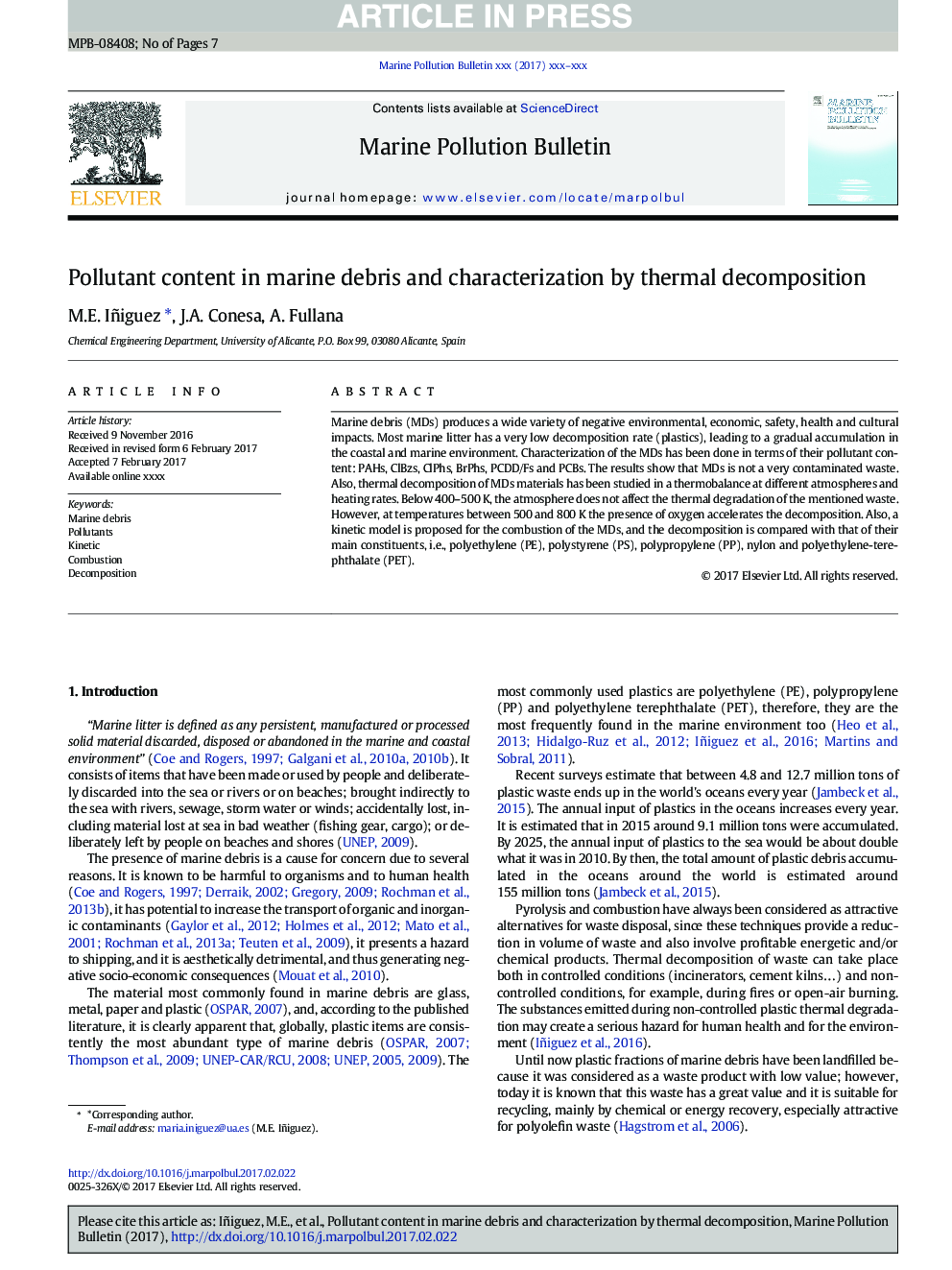| Article ID | Journal | Published Year | Pages | File Type |
|---|---|---|---|---|
| 5757546 | Marine Pollution Bulletin | 2017 | 7 Pages |
Abstract
Marine debris (MDs) produces a wide variety of negative environmental, economic, safety, health and cultural impacts. Most marine litter has a very low decomposition rate (plastics), leading to a gradual accumulation in the coastal and marine environment. Characterization of the MDs has been done in terms of their pollutant content: PAHs, ClBzs, ClPhs, BrPhs, PCDD/Fs and PCBs. The results show that MDs is not a very contaminated waste. Also, thermal decomposition of MDs materials has been studied in a thermobalance at different atmospheres and heating rates. Below 400-500Â K, the atmosphere does not affect the thermal degradation of the mentioned waste. However, at temperatures between 500 and 800Â K the presence of oxygen accelerates the decomposition. Also, a kinetic model is proposed for the combustion of the MDs, and the decomposition is compared with that of their main constituents, i.e., polyethylene (PE), polystyrene (PS), polypropylene (PP), nylon and polyethylene-terephthalate (PET).
Related Topics
Physical Sciences and Engineering
Earth and Planetary Sciences
Oceanography
Authors
M.E. Iñiguez, J.A. Conesa, A. Fullana,
